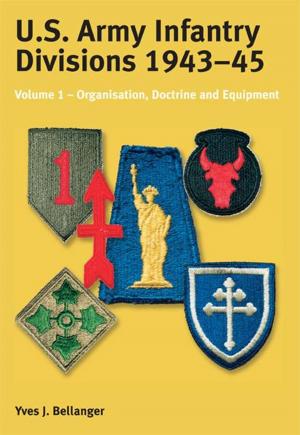A Flawed Genius
Field Marshal Walter Model, A Critical Biography
Nonfiction, History, Military, World War II| Author: | Marcel Stein | ISBN: | 9781908916167 |
| Publisher: | Helion and Company | Publication: | July 13, 2010 |
| Imprint: | Helion and Company | Language: | English |
| Author: | Marcel Stein |
| ISBN: | 9781908916167 |
| Publisher: | Helion and Company |
| Publication: | July 13, 2010 |
| Imprint: | Helion and Company |
| Language: | English |
Walter Model ranks among the foremost commanders of the German Wehrmacht during World War Two. This is recognized by both German and foreign military historians. But Model was also one of the most brutal German Generals. Whenever he assumed a new command, he showered his staff officers with insults which hurt their dignity and led many of them to request their transfer. The higher Model rose in rank, the more offensive his behavior became.
In the first seven chapters, the author describes the successive stages of Walter Model's career, beginning with his youth and ending with his suicide on April 21, 1945, when he finally woke up to his errors, dissolved his Army Group in the Ruhr Pocket and told his soldiers that they were free to go home.
Walter Model had served with distinction as a junior officer during the First World War. In the Reichswehr and after 1935 in the Wehrmacht, his service altered between troop commands and increasingly important duties in the Generalstab. In March 1938, he reached General's rank with his promotion to Generalmajor.
During World War Two, Walter Model rose to the highest ranks. In the campaigns in Poland and France he was Chief of Staff of a Corps and later of an Army. His first troop command was a Panzer division during the initial phase of the war against Russia. In the winter of 1941 he rose to corps command, a few weeks later he became commander in chief of 9th Army. As of 1944 he assumed command of Army Groups. In the East, he commanded two of the three Army Groups simultaneously and was also responsible for coordination with the third Army Group, making him, in practice, Supreme Commander East. He was then named Supreme Commander West and commanded Army Group B until the end. Chapter eight is a detailed account of Model's active involvement in the worst war crimes. Chapter nine deals with Model's increasingly absurd orders of the day, some of which can cast doubt on his sanity. Chapter ten deals with courts martial convened by him and shows how he was part of the increasing perversion of military justice. The last chapter 'Conclusion' is an analysis of the many aspects of Model's personality.
Researched from a huge array of primary and secondary sources, 'A Flawed Genius' is destined to become the primary biography about Model, a most controversial and complex German military figure.
Walter Model ranks among the foremost commanders of the German Wehrmacht during World War Two. This is recognized by both German and foreign military historians. But Model was also one of the most brutal German Generals. Whenever he assumed a new command, he showered his staff officers with insults which hurt their dignity and led many of them to request their transfer. The higher Model rose in rank, the more offensive his behavior became.
In the first seven chapters, the author describes the successive stages of Walter Model's career, beginning with his youth and ending with his suicide on April 21, 1945, when he finally woke up to his errors, dissolved his Army Group in the Ruhr Pocket and told his soldiers that they were free to go home.
Walter Model had served with distinction as a junior officer during the First World War. In the Reichswehr and after 1935 in the Wehrmacht, his service altered between troop commands and increasingly important duties in the Generalstab. In March 1938, he reached General's rank with his promotion to Generalmajor.
During World War Two, Walter Model rose to the highest ranks. In the campaigns in Poland and France he was Chief of Staff of a Corps and later of an Army. His first troop command was a Panzer division during the initial phase of the war against Russia. In the winter of 1941 he rose to corps command, a few weeks later he became commander in chief of 9th Army. As of 1944 he assumed command of Army Groups. In the East, he commanded two of the three Army Groups simultaneously and was also responsible for coordination with the third Army Group, making him, in practice, Supreme Commander East. He was then named Supreme Commander West and commanded Army Group B until the end. Chapter eight is a detailed account of Model's active involvement in the worst war crimes. Chapter nine deals with Model's increasingly absurd orders of the day, some of which can cast doubt on his sanity. Chapter ten deals with courts martial convened by him and shows how he was part of the increasing perversion of military justice. The last chapter 'Conclusion' is an analysis of the many aspects of Model's personality.
Researched from a huge array of primary and secondary sources, 'A Flawed Genius' is destined to become the primary biography about Model, a most controversial and complex German military figure.















